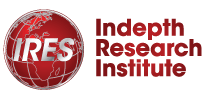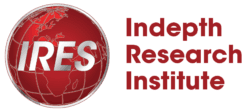In today’s rapidly evolving world, sustainable development has become a strategic imperative, connecting environmental stewardship, social equity, and strong governance. The United Nations Sustainable Development Goals (SDGs) offer a global roadmap for progress, while the Environmental, Social, and Governance (ESG) framework turns these ambitions into measurable corporate and institutional action.
Together, they form the foundation for inclusive, resilient, and future-ready growth.
Contents
- 1 Understanding the Intersection of SDGs and ESG
- 2 Pathways for Integration
- 3 The Role of Capacity Building in Sustainable Integration
- 4 Why ESG Integration Matters for SDG Achievement
- 5 Building the Future Together
- 6 Interesting Fact
- 7 FAQs
- 7.1 Q1: What exactly are ESG principles, and why do they matter for SDG integration?
- 7.2 Q2: How does one prioritize which SDGs to focus on in ESG integration?
- 7.3 Q3: What reporting frameworks are commonly used for ESG + SDG integration?
- 7.4 Q4: Do small or medium organizations benefit from integrating ESG and SDGs?
- 7.5 Q5: What are common pitfalls in ESG and SDG integration?
- 8 Conclusion
Understanding the Intersection of SDGs and ESG
While the SDGs outline 17 interconnected goals for a better future, ESG provides the operational lens for aligning strategy with sustainability. As the World Economic Forum (2023) notes, ESG principles now shape how organizations assess risk, attract investment, and ensure accountability.


Moreover, as governments, businesses, and development agencies work to balance growth with responsibility, aligning ESG metrics with SDG targets creates measurable pathways for impact. For example, reducing carbon emissions (SDG 13: Climate Action) enhances environmental transparency under ESG, while promoting gender equality (SDG 5) strengthens the “S” pillar through diversity and inclusion.
Also Read: ESG in East Africa: Strategies for Sustainable Growth
Pathways for Integration
Achieving coherence between ESG and SDG frameworks demands capacity, coordination, and continuous learning. Several transition pathways are emerging across sectors:
-
Strategic alignment – Organizations are embedding SDG-aligned goals into their ESG strategies, linking performance indicators with national and global sustainability frameworks (UN Global Compact, 2022).
-
Data-driven decision-making – Companies increasingly rely on integrated reporting standards, such as the GRI or SASB frameworks, to connect ESG performance with SDG outcomes.
-
Collaborative partnerships – Multi-stakeholder collaborations between governments, NGOs, and the private sector are driving innovation in sustainable finance, renewable energy, and social inclusion.
-
Capacity building – Institutions are investing in professional training to equip teams with the skills to plan, implement, and monitor sustainability strategies effectively.


The Role of Capacity Building in Sustainable Integration
Transitioning from theory to impact depends on human capacity.
This is where specialized training makes a difference.
At IRES, our Principles of Sustainable Development and SDG Integration Course equips professionals to design and implement impactful sustainability initiatives globally and locally.
Through practical exercises, case studies, and interactive modules, participants gain the tools to:
-
Map organizational activities to relevant SDG targets.
-
Integrate ESG principles into project design and corporate reporting.
-
Develop indicators that capture both sustainability outcomes and governance performance.
-
Foster cross-sector partnerships that accelerate impact and accountability.
Such learning experiences are essential for policymakers, sustainability managers, and development practitioners seeking to advance from compliance to transformative impact.
Why ESG Integration Matters for SDG Achievement
When ESG principles are embedded in organizational culture, they unlock new opportunities for achieving the SDGs. For example, strong governance ensures transparent decision-making and responsible resource management, while robust social policies promote inclusivity and equity. Similarly, environmental accountability safeguards natural capital, ensuring the long-term viability of ecosystems that underpin economic growth.


Moreover, investors increasingly reward organizations that align ESG with the SDGs. According to the OECD (2023), such organizations show greater resilience, stronger stakeholder trust, and improved access to sustainable finance.
Building the Future Together
Ultimately, achieving sustainable development requires the knowledge, skills, and structures to act decisively. The integration of ESG principles with the SDGs provides the roadmap for doing just that.
By understanding the interlinkages and strengthening institutional capacity, we can build systems that are sustainable, equitable, transparent, and adaptable.
In doing so, they become agents of change in driving Africa’s transition toward inclusive and resilient development.
Interesting Fact
According to the International Finance Corporation (IFC), the IFC’s ESG standards map directly to all 17 SDGs, covering 75 SDG targets (44%) and 104 SDG indicators (42%), showing that properly aligned ESG frameworks can significantly further SDG achievement (IFC)


FAQs
Q1: What exactly are ESG principles, and why do they matter for SDG integration?
A: ESG stands for Environmental, Social, and Governance. These principles guide how organizations operate ethically, responsibly, and sustainably. When integrated with the SDGs, which are global goals, ESG helps organizations ensure that their daily operations contribute to broader sustainable development.
Q2: How does one prioritize which SDGs to focus on in ESG integration?
A: Organizations should assess where they have the greatest impact or risk, which SDGs are most relevant to their sector, and stakeholder expectations. Then set measurable, time-bound objectives aligned with both ESG and SDG frameworks.
Q3: What reporting frameworks are commonly used for ESG + SDG integration?
A: Frameworks like the Global Reporting Initiative (GRI), IFC ESG Standards, and Sustainable Stock Exchange (SSE) models are often used. They help organizations align disclosures with SDG indicators and ensure transparency.
Q4: Do small or medium organizations benefit from integrating ESG and SDGs?
A: Absolutely. While scale differs, many principles like ethical governance, worker welfare, and environmental management are relevant regardless of size. Integration can improve resilience, stakeholder trust, and access to funding.
Q5: What are common pitfalls in ESG and SDG integration?
A: Some pitfalls include setting vague goals, lacking reliable data, failing to engage stakeholders, misalignment between strategy and implementation, and underestimating governance or ethical oversight required.
Conclusion
Ultimately, the intersection of ESG and Sustainable Development Goals represents a new era of purposeful action. As institutions, governments, and businesses increasingly recognize that sustainability drives competitiveness and long-term value, the ability to translate these frameworks into measurable strategies becomes essential. Through capacity building, innovation, and informed leadership, organizations can move beyond compliance and shape a future that is resilient, inclusive, and sustainable for all.
I’m a storyteller at heart and a strategist by trade. With over 3 years of experience in digital marketing, content creation, and brand communications, I’ve worked with leading institutions and dynamic brands to shape narratives that resonate. From educational spaces and corporate training to real estate and sustainability, I’ve crafted content that not only speaks but delivers. This blog is my creative space, a reflection of everything I’ve learned (and keep learning) about writing with purpose, building trust, and turning ideas into impact.









Comment here